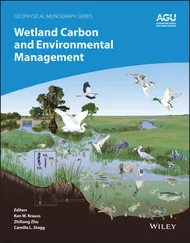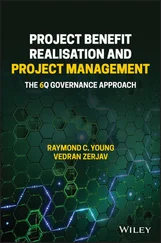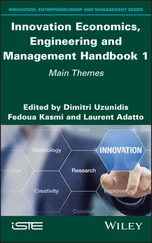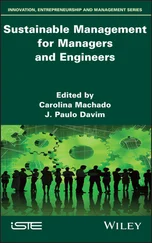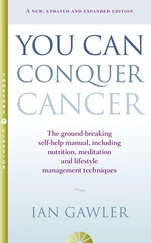Pollutants and Water Management
Здесь есть возможность читать онлайн «Pollutants and Water Management» — ознакомительный отрывок электронной книги совершенно бесплатно, а после прочтения отрывка купить полную версию. В некоторых случаях можно слушать аудио, скачать через торрент в формате fb2 и присутствует краткое содержание. Жанр: unrecognised, на английском языке. Описание произведения, (предисловие) а так же отзывы посетителей доступны на портале библиотеки ЛибКат.
- Название:Pollutants and Water Management
- Автор:
- Жанр:
- Год:неизвестен
- ISBN:нет данных
- Рейтинг книги:3 / 5. Голосов: 1
-
Избранное:Добавить в избранное
- Отзывы:
-
Ваша оценка:
- 60
- 1
- 2
- 3
- 4
- 5
Pollutants and Water Management: краткое содержание, описание и аннотация
Предлагаем к чтению аннотацию, описание, краткое содержание или предисловие (зависит от того, что написал сам автор книги «Pollutants and Water Management»). Если вы не нашли необходимую информацию о книге — напишите в комментариях, мы постараемся отыскать её.
WATER MANAGEMENT Pollutants and Water Management: Resources, Strategies and Scarcity
Pollutants and Water Management
Pollutants and Water Management: Resources, Strategies and Scarcity
Pollutants and Water Management — читать онлайн ознакомительный отрывок
Ниже представлен текст книги, разбитый по страницам. Система сохранения места последней прочитанной страницы, позволяет с удобством читать онлайн бесплатно книгу «Pollutants and Water Management», без необходимости каждый раз заново искать на чём Вы остановились. Поставьте закладку, и сможете в любой момент перейти на страницу, на которой закончили чтение.
Интервал:
Закладка:
17 Goyal, M.K. and Surampalli, R.Y. (2018). Impact of climate change on water resources in India. Journal of Environmental Engineering 144 (7): 04018054.
18 Hegde, N. G. (2012). Water scarcity and security in India. In BAIF‐Indian Science Congress. www.indiawaterportal.org/articles/water‐scarcity‐and‐security‐india(accessed 31 March 2020).
19 IPCC (2007). Fourth Assessment Report. Intergovernmental Panel on Climate Change. Cambridge: Cambridge University Press.
20 IPCC Working Group III (2014). Climate Change 2014. Mitigation of Climate Change: Summary for Policymakers. Geneva: Intergovernmental Panel on Climate Change.
21 IDSA (2010). Water Security for India: The External Dynamics. Institute for Defence Studies and Analyses. www.indiaenvironmentportal.org.in/files/book_WaterSecurity.pdf(accessed 25 March 2020).
22 Jain, S.K. (2019). Water resources management in India–challenges and the way forward. Current Science 117 (4): 569–576.
23 Kadam, A., Wagh, V., Umrikar, B., and Sankhua, R. (2020). An implication of boron and fluoride contamination and its exposure risk in groundwater resources in semi‐arid region, Western India. Environment, Development and Sustainability 22: 7033–7056.
24 Kaur, G., Kumar, R., Mittal, S. et al. (2019). Ground/drinking water contaminants and cancer incidence: a case study of rural areas of South West Punjab, India. Human and Ecological Risk Assessment: An International Journal https://doi.org/10.1080/10807039.2019.1705145.
25 Khurana, I., and Sen, R. (2009). Drinking water quality in rural India: Issues and approaches: www.indiawaterportal.org/articles/issues‐and‐approaches‐drinking‐water‐quality(accessed 25 January 2020).
26 Kiszewski, A., Mellinger, A., Spielman, A. et al. (2004). A global index representing the stability of malaria transmission. The American Journal of Tropical Medicine and Hygiene 70 (5): 486–498.
27 Kulkarni, A.V., Rathore, B.P., Singh, S.K., and Bahuguna, I.M. (2011). Understanding changes in the Himalayan cryosphere using remote sensing techniques. International Journal of Remote Sensing 32 (3): 601–615.
28 Kumar, R., Kumar, R., Mittal, S. et al. (2016). Role of soil physicochemical characteristics on the present state of arsenic and its adsorption in alluvial soils of two agri‐intensive region of Bathinda, Punjab, India. Journal of Soils and Sediments 16 (2): 605–620.
29 Kumar, R., Vaid, U., and Mittal, S. (2018). Water crisis: issues and challenges in Punjab. In: Water Resources Management (eds. P.S. Vijay and Y. Shalini), 93–103. Singapore: Springer.
30 Kumar, R., Mittal, S., Sahoo, P.K., and Sahoo, S.K. (2020). Source apportionment, chemometric pattern recognition and health risk assessment of groundwater from southwestern Punjab, India. Environmental Geochemistry and Health https://doi.org/10.1007/s10653‐020‐00518‐1.
31 Ministry of Water Resources (2014). Groundwater quality scenario. http://wrmin.nic.in/forms/list.aspx?lid=327&Id=4(accessed 25 February 2020).
32 Mittal, S., Kaur, G., and Vishwakarma, G.S. (2014). Effects of environmental pesticides on the health of rural communities in the Malwa Region of Punjab, India: a review. Human and Ecological Risk Assessment: An International Journal 20 (2): 366–387.
33 MoWR (2015). A year of inclusive development in water resources sector. National Water Mission, Ministry of WR, RD&GR, Govt of India. www.nationalwatermission.gov.in/sites/default/files/COP%2021%20MoWR%20Booklet.pdf(accessed 17 January 2020).
34 Mukherji, A (2019). Climate change, groundwater & agriculture in India. www.chinawaterrisk.org/opinions/climate‐change‐groundwater‐agriculture‐in‐india(accessed 25 March 2020).
35 NCIWRD (1999). GoI, Integrated Water Resource Development: A Plan for Action. Report of the National Commission for Integrated Water Resource Development, Vol 1, Government of India (GoI), Sept 1999. New Delhi: Government of India.
36 NITI Aayog (2018). Composite Water Management Index. A tool for water management. National Institution for Transforming India, GOI. New Delhi: Government of India. www.niti.gov.in/writereaddata/files/document_publication/2018‐05‐18‐Water‐index‐Report_vS6B.pdf(accessed 25 March 2020).
37 Pandey, P. and Venkataraman, G. (2012). Climate change effect on glacier behavior: A case study from the Himalayas. Earthzine: Climate Consensus. https://earthzine.org/climate‐change‐effect‐on‐glacier‐behavior‐a‐case‐study‐from‐the‐himalayas‐2/.
38 Pandve, H. (2010). Climate change and coastal mega cities of India. Indian Journal of Occupational and Environmental Medicine 14 (1): 22–23.
39 Raj, A. (2010). Environmental economics. Water security in India: The coming challenges. http://futuredirections.org.au/wp‐content/uploads/2011/05/1286517242‐FDI%20Strategic%20Analysis%20Paper%208%20October%202010.pdf(accessed 25 March 2020).
40 Ramanathan, A.L. (2011). Status Report on Chhota Shigri Glacier (Himachal Pradesh). New Delhi, India: Dept. of Science and Technology, Ministry of Science and Technology.
41 Robine, J.M., Cheung, S.L.K., Le Roy, S. et al. (2008). Death toll exceeded 70,000 in Europe during the summer of 2003. Comptes Rendus Biologies 331 (2): 171–178.
42 Sangewar, C.V., Shukla, S.P., and Singh, R.K. (2009). Inventory of the Himalayan Glaciers. Special Publication 558. Calcutta, India: Geological Survey of India.
43 Shankar, P.V., Kulkarni, H., and Krishnan, S. (2011). India's groundwater challenge and the way forward. Economic and Political Weekly: 37–45. www.jstor.org/stable/27918012.
44 Sharma, A.K., Singh, S.K., and Kulkarni, A.V. (2013). Glacier inventory in Indus, Ganga and Brahmaputra basins of the Himalaya. National Academy Science Letters 36 (5): 497–505.
45 Sharma, S., Kumar, R., Sahoo, P.K., and Mittal, S. (2020). Geochemical relationship and translocation mechanism of arsenic in rice plants: a case study from health prone south West Punjab, India. Groundwater for Sustainable Development https://doi.org/10.1016/j.gsd.2020.100333.
46 Shiva, V. (2009). Climate change in the Himalayas. Bonn: Federal Ministry for the Environment, Nature Conservation and Nuclear Safety.
47 Snyder, S. (2020). Water in crisis‐India. https://thewaterproject.org/water‐crisis/water‐in‐crisis‐India(accessed 1 June 2020).
48 UN Water (2013). What is water security? Infographic. www.unwater.org/publications/water‐security‐infographic(accessed 1 May 2020).
49 UN WWDR (2015). The United Nations World Water Development Report. Water for a sustainable world. www.unesco.org/new/fileadmin/MULTIMEDIA/HQ/SC/images/WWDR2015Facts_Figures_ENG_web.pdf(accessed 25 May 2020).
50 UN WWDR (2019). World Water Development Report. www.unwater.org/publications/world‐water‐development‐report‐2019(accessed 25 May 2020).
51 UNICEF and WHO (2012). Progress on drinking water and sanitation 2012 update. www.unicef.org/media/files/JMPreport2012.pdf(accessed 15 May 2020).
52 United Nations World Water Development Report (2016). Water and jobs: facts and figures. https://unesdoc.unesco.org/ark:/48223/pf0000244041(accessed 7 June 2020).
53 Unitus Seed Fund (2014). 10 facts about drinking water in India that may just make you sick. http://usf.vc/entrepreneur‐info/10‐facts(accessed 7 June 2020).
54 WHO (2018). Climate change and health. www.who.int/news‐room/fact‐sheets/detail/climate‐change‐and‐health(accessed 9 June 2020).
55 WHO (2019). Drinking water facts sheet. www.who.int/news‐room/fact‐sheets/detail/drinking‐water(accessed 5 June 2020).
56 World Bank report (2018). High and dry: Climate change, water, and the economy. www.worldbank.org/en/topic/water/publication/high‐and‐dry‐climate‐change‐water‐and‐the‐economy(accessed 8 June 2020).
Читать дальшеИнтервал:
Закладка:
Похожие книги на «Pollutants and Water Management»
Представляем Вашему вниманию похожие книги на «Pollutants and Water Management» списком для выбора. Мы отобрали схожую по названию и смыслу литературу в надежде предоставить читателям больше вариантов отыскать новые, интересные, ещё непрочитанные произведения.
Обсуждение, отзывы о книге «Pollutants and Water Management» и просто собственные мнения читателей. Оставьте ваши комментарии, напишите, что Вы думаете о произведении, его смысле или главных героях. Укажите что конкретно понравилось, а что нет, и почему Вы так считаете.




